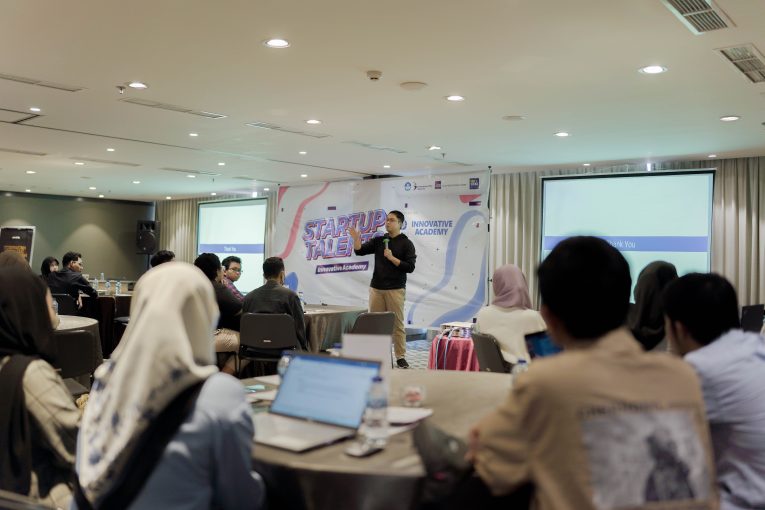
Product Market Fit was presented on Saturday (9/9) by Alwy Herfian S, the Co-founder of Widya Indonesia Group. The presentation commenced with the sharing of experiences related to the development of the Widya Indonesia Group startup. The Widya Indonesia Group startup encompasses various fields, including IoT, Robotics, AI, and others, with 75% of its focus directed towards the construction sector, which has seen significant implementation within the IKN. The mentor explained that there are several interrelated phases involved in achieving product market fit and problem solution fit, which serve to rectify shortcomings from previous stages.
Alwy also delved into the subject of scaling a startup, emphasizing that it should be validated by a multitude of individuals rather than relying on the opinions of a select few. “When creating something, devise a unique solution that addresses a specific problem,” he articulated.
Furthermore, Alwy underscored the importance of concentrating on innovating solutions to address specific problems. Innovation is something that emerges from one’s aspirations, involves a dedicated team for development, and can be translated into a viable business. To validate the created product, the mentor introduced a method known as the Pirate Funnel, employing the AAARRR metrics. The Pirate Funnel delineates how consumers can be enticed to use a product. This Pirate Funnel can be considered a parameter for ascertaining a product’s achievement of a product market fit. The Pirate Funnel is composed of AAARRR, which stands for Awareness (making people aware and interested), Acquisition (stimulating interest and motivating inquiry), Activation (instigating a desire to possess the product), Retention (encouraging customers to reuse, possibly through repurchasing or subscribing), Referral (recommending to others), and Revenue (income generation).
The mentoring session proceeded with a Q&A session concerning the characteristics of a strong product market fit. Following the mentoring session, the subsequent segment involved a workshop where participants were tasked with creating a business model canvas, user flow, and other necessary elements for designing a startup.
After an in-depth discussion of product market fit, wherein participants were urged to comprehend market needs and their target audience, the subsequent topic addressed was brand positioning, with the hope that participants could determine the branding strategies to be employed.
